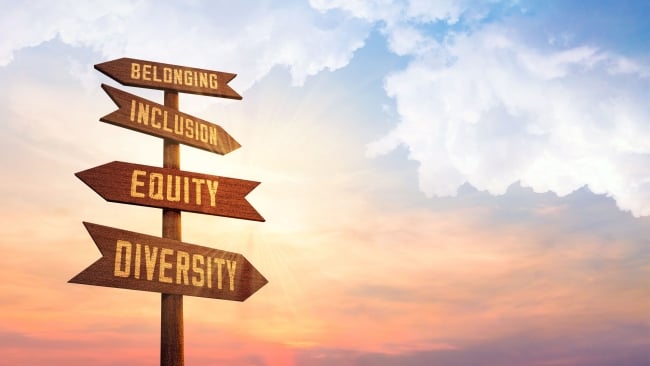You have /5 articles left.
Sign up for a free account or log in.

Afif Ahsan/iStock/Getty Images Plus
Hotbeds for indoctrination and discrimination against white students. Places that bloat administrative costs. These are only a few of the criticisms that conservatives have leveled against campus centers for diversity, equity and inclusion, which are now under threat as lawmakers have passed draconian bans on DEI programming in states including Florida, Iowa, Texas and Utah.
But as a public university professor in Utah, I saw something very different.
From 2016 to 2020, I taught history at what is now Utah Tech University. An ambitious, growing institution, Utah Tech serves a population of more than 12,000 students in Utah’s southwestern corner. The student population hails largely from Utah and is overwhelmingly white; the few students of color in my classes often felt isolated and out of place.
Many of these students found community at Utah Tech’s Center for Inclusion and Belonging, located near my office. While it offered campus programming and hosted affinity clubs, at a basic level the CIB was simply a comfortable room where students of minority racial and gender identities could socialize or study. Officially open to all students regardless of background, the CIB’s function was to provide community and support for students who often lacked both.
On July 1, the CIB closed its doors—and a system that supported both student success and campus free expression disappeared.
In January, the Utah Legislature passed HB 261, a bill that forbade universities to “establish or maintain an office, division, employment position, or other unit” dedicated to diversity, equity and inclusion. Governor Spencer Cox defended HB 261 as necessary to combat “the extreme changes in philosophy that have occurred on college campuses … over the past 10 years on the issues of race and DEI,” which he described as “a new and profound political ideology that focuses on dividing each of us into distinct identity groups.”
HB 261 is part of a wave of restrictions on university activities around race, gender and identity that my team at PEN America tracks across all 50 states. These laws have resulted in widespread closures of gathering spaces like the CIB; the University of North Florida even closed its interfaith center in response to a state DEI ban. More than a hundred DEI staff have been laid off, upending careers and lives. And an epidemic of “jawboning” and threats by elected officials has intimidated university administrators into closing DEI offices and cultural centers even in states without official restrictions.
But Utah was supposed to be different.
Unlike other states’ laws, HB 261 does not cut funding from universities or mandate the firing of staff. The Atlantic’s Conor Friedersdorf praised Utah’s “promising” law because “it makes real compromises with DEI supporters. Race-based cultural centers … will stay open.” In March, Utah Tech administrators predicted the bill might only require the CIB to change its name.
Yet Utah’s higher education commissioner, Geoff Landward, subsequently advised university leaders that closing cultural centers was “an inevitability … given the political climate.” Five of the six public four-year universities in the state responded by closing at least one of their centers, including Utah Tech’s CIB and its LGBTQ+ Resource Center; the sixth university, Utah Valley University, is restructuring several cultural centers.
Negative public perceptions of university DEI offices stem in large part from alleged excesses at elite private institutions, where DEI staff can number in the dozens—and where, indeed, some staff have pitted DEI against free expression principles in unhelpful ways. Conservative critics such as the Manhattan Institute’s Christopher Rufo have accused university DEI offices of being cultlike and places of “psychological conditioning.”
But the CIB never reflected those stereotypes. When I taught at Utah Tech, the CIB never had more than five staff members. As a white professor, I always felt welcome in its community space. My students who made regular use of its offerings were academically successful and engaged in the broader campus community.
I agree with many DEI critics that colleges should be marketplaces of ideas, where students must contend with views that make them uncomfortable or that they find offensive. But community gathering spaces like the CIB are a key part of what makes this sort of free speech environment possible. Such institutional spaces, where students’ identities and experiences are valued and understood, can help students process the uncomfortable speech they encounter elsewhere on campus and develop the resilience necessary to succeed in a pluralistic society.
“We don’t want anyone to feel marginalized or pushed out. That was not the intention at all of this bill,” Cox said recently. I suspect students can see through such remarks and recognize the real impact of what the state has done.
Utah Tech’s Center for Inclusion and Belonging operated “under the principle that every person’s unique life experiences enrich campus life” and add “a profound element to a true education.”
Maintaining such a center sends students a message about what, and whom, a university values and embraces. Banning it through government interference sends a message, too.








